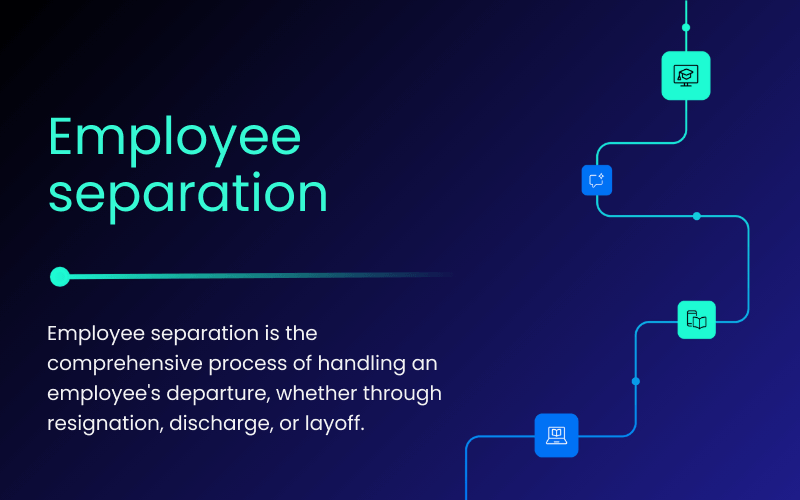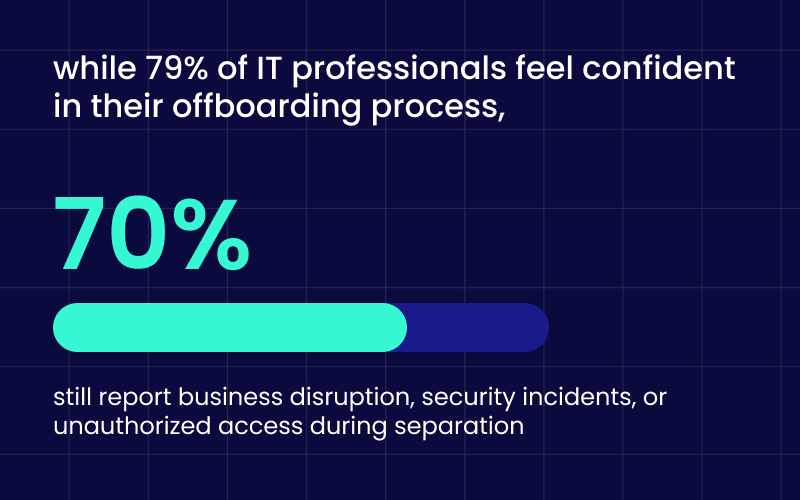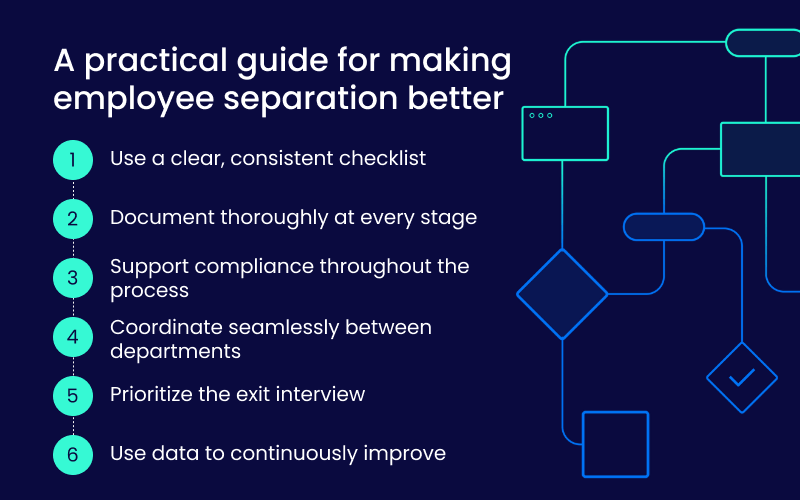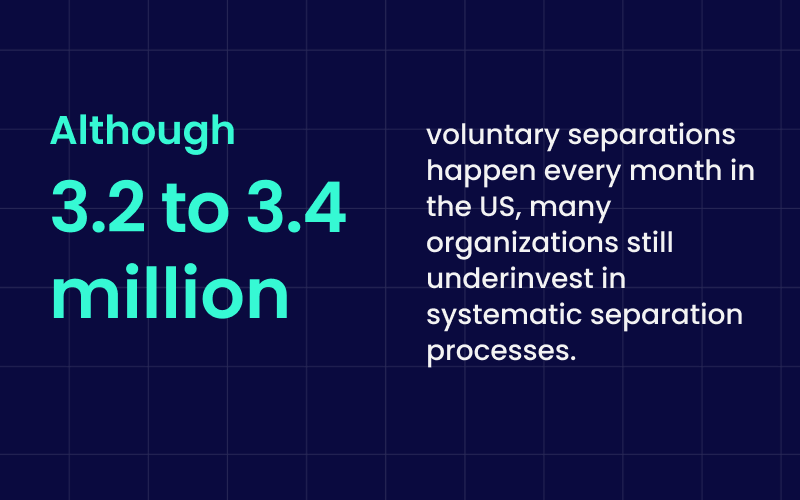Employee termination is tough for everyone involved. The departing employee feels uncertain or even angry, managers feel uncomfortable, and HR teams feel pressure to get everything right. But while the emotional side will always be challenging, the operational process can be refined to reduce confusion and stress for all parties.
The key is moving from reactive scrambling to proactive coordination. Too many organizations still rely on manual handoffs between HR, IT, Security, and Payroll, creating gaps where critical steps get missed and timelines get extended unnecessarily. This means teams are losing valuable time and facing unnecessary risks during what should be a straightforward transition.
What is employee separation?

Employee separation is the comprehensive process of handling an employee’s departure, whether through resignation, discharge, or layoff. It typically includes:
- Notifying relevant departments and processing termination paperwork
- Ensuring benefits continuation and final payroll accuracy
- Shutting down system access and collecting company equipment
- Conducting exit interviews and documenting separation details
While this may sound straightforward, this process touches multiple departments and demands precise coordination. When steps are missed or delayed, organizations face compliance issues, security risks, and financial penalties.
The challenges
For most teams, the biggest hurdle is the disconnected nature of the process. HR works in one system, IT in another, while Payroll and Security operate in their own environments. Each team has different deadlines and requirements, creating a coordination nightmare.
Traditional separation workflows compound the problem. Manual checklists are easy to overlook, handoffs between departments often fail, and the pressure of compliance deadlines means mistakes are both likely and costly. Remote and distributed teams face additional challenges in coordinating across time zones and systems.
It’s no surprise that while 79% of IT professionals feel confident in their offboarding process, 70% still report business disruption, security incidents, or unauthorized access during separation. Without structure and automation, organizations waste resources and expose themselves to risks that could easily be prevented.

The Solution: WalkMe
This is where digital adoption platforms like WalkMe become game-changers.
Rather than relying on disconnected manual processes, these platforms provide coordinated, step-by-step guidance that transforms how teams handle employee separations. WalkMe, specifically, offers automated checklists, cross-departmental workflows, and real-time reminders directly within existing HR systems, eliminating the gaps between teams and reducing the risk of missed steps.
The results speak for themselves: organizations using WalkMe have saved 7.28 hours per employee termination across HR, IT, Payroll, Security, and Management teams. But implementation success depends on following proven best practices.
A practical guide for making employee separation better

- Use a clear, consistent checklist
Standard checklists ensure nothing gets overlooked and every step remains visible and accountable. Tools like WalkMe provide automated task tracking that guides teams through each phase, from IT access removal to payroll closeout, without relying on memory or manual coordination.
- Document thoroughly at every stage
Comprehensive documentation supports compliance and helps organizations learn from each separation. WalkMe can prompt teams to record separation reasons, complete exit interviews, and gather employee feedback, ensuring critical information isn’t lost in the transition.
- Support compliance throughout the process
Building workflows around required laws and regulations reduces last-minute emergencies and creates stronger records for audits. Digital guidance tools help teams stay compliant by providing automated reminders and validation checks at each critical step.
- Coordinate seamlessly between departments
Cross-departmental handoffs are where most separation processes break down. WalkMe bridges these gaps by providing unified workflows that guide HR, IT, Payroll, and Security teams through their interconnected responsibilities, ensuring smooth transitions and clear accountability.
- Prioritize the exit interview
Exit interviews are often skipped, yet they provide critical organizational insights. Automated prompts and structured workflows help teams consistently capture this valuable feedback, turning departures into learning opportunities.
- Use data to continuously improve
Platforms like WalkMe allow teams to see exactly where separations get delayed, which steps are commonly missed, and how often manual interventions are needed. This data makes it easier to refine the separation workflow for continuous improvement.
Putting it all together
The combination of these strategies creates a comprehensive separation ecosystem. When implemented effectively with platforms like WalkMe, HR teams can track progress across departments, identify bottlenecks, and continuously refine the experience based on real usage data.
Although 3.2 to 3.4 million voluntary separations happen every month in the US, many organizations still underinvest in systematic separation processes. WalkMe bridges this gap by ensuring separation workflows are actually followed and completed as intended.

What success looks like
When employee separation is done well, the benefits are clear:
- Teams save measurable time, with benchmarks showing 7.28 hours saved per termination
- Tasks are completed consistently, on schedule, and with fewer errors
- Compliance risks decrease while automation increases
- Security and IT face fewer risks from missed access removal or equipment collection
Organizations that invest in improving this workflow not only save time and reduce risks, they also create a professional, respectful experience for departing employees while protecting their remaining workforce. With turnover costs estimated at 30% to 200% of an employee’s annual salary, these improvements translate directly to bottom-line impact.

